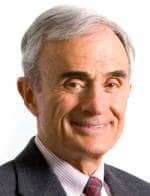 Will Kalender, PhD Will Kalender, PhD |
Willi Kalender, PhD, is professor, Institute of Medical Physics, Friedrich-Alexander-University Erlangen-Nürnberg, Germany.
Q: What are the clinical benefits of 16-slice CT technology?
Kalender: Examination times are reduced to such an extent that compromises in parameter selection are no longer required. Most important, one can have submillimeter isotropic resolution for all anatomic regions in a very short timeless than the duration of a breath hold.
Q: How will these scanners change the practice of radiology?
Kalender: There have been reports of faster patient throughput, but that is not the important difference. What goes up is, above all, the quality of the examination. Top performance is provided routinely.
Q: Will the larger number of slices and the greater (even, perhaps, overwhelming) amount of information generated by multislice CT increase the acceptance of three-dimensional displays?
Kalender: Definitely, yes; film is out, and interactive reading of volumes is in.
Q: Do the benefits justify the cost of upgrading to 16-slice CT?
Kalender: The increase in benefit becomes more and more marginal as the number of slices goes up, but the 16-slice machines are, to a high degree, perfect.
Q: What will radiologists be able to do when CT technology moves beyond 16 slices to 32, 64, or more?
Kalender: Only few additional applications will become available when CT goes to more than 16 slices. One example would be perfusion of the heart. Scanners that capture more than 16 slices would also be of interest for higher and higher resolution. The greater number of slices, however, will imply significantly higher radiation doses for a given level of soft-tissue discrimination, which will be prohibitive.
Judith Gunn Bronson, MS, is a contributing writer for Decisions in Axis Imaging News.





